A large number of systemic pathology can lead to a significant decrease in the quality of life, complete loss of performance and even severe disability.Diseases associated with musculoskeletal system are not only in old age.Every 2-3 case is seen in patients of working age.Arthrosis is the most dangerous and poorly responsible for improvement.
This degenerative disease occurs with thinning of cartilage in large and small joints, causing them to decrease the dimensions of movements and clear pain when trying to perform.It is possible to prevent only serious consequences as a result of the appointment of adequate treatment in very early stages of development of the disease.In this article we will detect development, pathogenesis, clinical manifestations, modern methods of diagnosis and the reasons for the treatment of arthrosis.
Arthrosis
Focusing on statistical indicators, it can be found that arthrosis is a very relevant disease, and the frequency of its occurrence is only increasing every year.According to the World Health Organization, pathology is seen in seven percent of the population of the planet.This keeps it in the first place in the frequency of identification compared to other disorders of the musculoskeletal system.
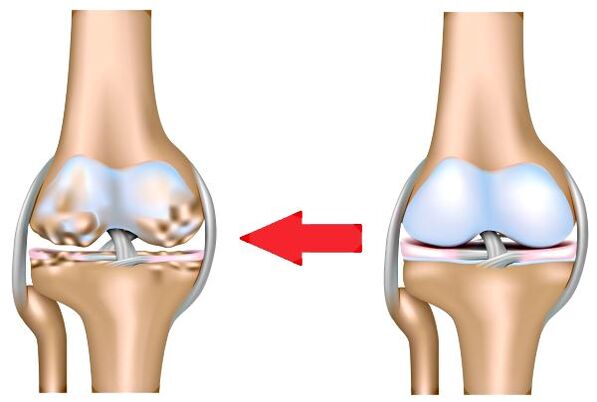
Arthrosis is a chronic disease of non-inflammatory etiology, causing deformity in the affected areas
Often in young people, the correctness of cartilage is seen, more often it can be found in men.In young girls, interfaced arthrosis is often detected.After reaching the age of fifty, the focus wound becomes almost identical for representatives of both sexual frequency and localization and is about 60%.
From the data presented, it can be understood that it is extremely important to identify pathology in the early stages for the most effective drug therapy.Otherwise, treatment of launched arthrosis will be inaccessible for most elderly patients in relation to the financial component.
Causes and Risk Factor for the development of arthrosis
The frequency of the occurrence of joint disease presented has led to the fact that the problem is acute in medical circles of highly developed countries.Hundreds of million dollars are spent on study on arthrosis by leading clinics annually.The gradual study of the problem made it possible to detect the pathogenesis and factors of the process that could increase the possibility of the occurrence of the disease.
The modern and more complete classification of joint degeneration will be presented below, at this stage it is enough to understand that primary and secondary forms have been distinguished.
The following causes include the development of a secondary joint disease include the following:
- Congenital changes associated with blood supply to articular joints;
- Hurt in cartilage, ligamentus equipment or bone growth areas;
- Violations associated with metabolism, especially with a mineral link;
- Autoimmune pathology;
- Infections affect bone tissue;
- Hemophilia.
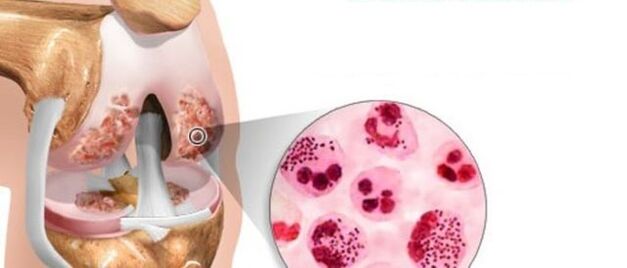
Primary arthrosis is an independent disease, it may develop as a result of the effects of such stimulating factors:
- Cenyl edge;
- Presence of additional body weight;
- Excessive physical activity;
- Surgical intervention in the joint;
- Genetic trend;
- Inadequate elementary intake of calcium and other minerals;
- Old intoxication;
- Long and persistent stays at low temperatures;
- Constant injury to bone joint.
Arthrosis
The general bone joint consists of two or more heads of combined, ligamentus equipment, cartilage, and mucus fluid.All these structures provide mobility in a certain area of the musculoskeletal system without pain, they also allow load obtained from walking and jumping, spreading it without damaging the body.
Arthrosis of joints belongs to a group of diseases with polyteloral origin.This means that often the cause of growth is the effect of an entire complex of trigger, including professional harmfulness, overweight, elderly and malnutrition.The pathogenesis is that some effects cause a significant decline in blood supply and lymph flow from the specified area.
In addition, chondocytes lose rapid regeneration and normal amounts of normal amounts of intrauterine fluid products, which reduces the friction of surfaces during movement.Gradually, cartilage becomes rough and begins to wash under the influence of pressure during active body movements.
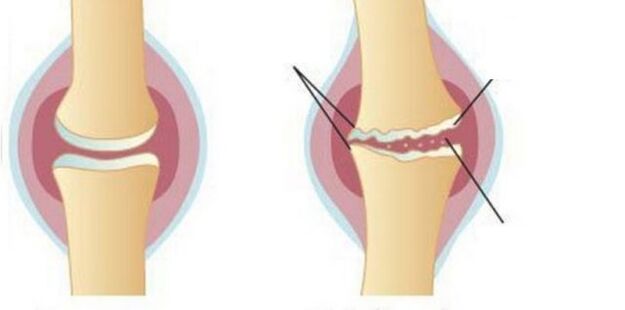
Gradually, the compensatory capabilities of the tissues are eliminated and gradually a layer of chondocytes disappears.When the degeneration reaches the bones, clear pain develops and the mobility decreases significantly.Without proper treatment, the patient can lose the capacity of fully active movements and even to maintain his needs independently.
Arthrosis symptoms
The person does not know what arthrosis is, the disease slowly begins and does not show itself in the early stages.Over time, the patient notes the presence of minor pain without a certain localization, which is extended against the background of significant physical exertion.Increased degeneration leads to the fact that the pain appears with minor movements and achieves a clear place.
The less noticeable symptoms of the development of arthrosis include:
- "Pain" pain in terms of weather;
- Crunch while walking;
- Morning hardness;
- muscle cramps.
With a deep wound of cartilage, local inflammation indications are indications, such as swelling, skin redness, and local increase in temperature.If a person does not take help from a doctor, symptoms progress and not only start appearing against the background of physical exercises, but also comfortably.
The thinning of a layer of chondocytes leads to deformation of the joints and the normal functioning of the organ.When realizing the pathological focus, the patient will note the largest pain points.In addition, the cartilage lip will become quite thicker along its edge, which will indicate compensation overgrowth.

Pain
A large number of violations in the area of bone joints leads to certain difficulties in the process of diagnosis.However, after evaluating the nature of pain, one can distinguish arthrosis from the arthritis of another etiology.In the described state, painful sensations occur as a rule, when trying to do active movements.Its intensity will gradually increase when trying to increase the load on the damaged joint.
The described clinical photo corresponds to the first stage of the process.In the second and third stages of progress, the pain also appears in a complete rest position, you can only stop them by giving them a comfortable position for the organ.The difference between arthritis is a constant appearance of pain, which does not disappear when the condition changes, and also intensifies at night.
Jiggling
The destruction of the natural structure of the cartilage causes the active spread of chondroblasts, but our body has a certain division range of polypotent cells.This phenomenon is called a compensatory buffer.This means that after a certain amount of mitotic divisions, the cell dies and can no longer breed its kind.
After some time, it causes changes in the normal size of the joint difference, so -the appearance of "christ" or outbreak in its lumen and holiday.This phenomenon only increases the process, as spikes formed during the process of destruction cause additional damage during movement.
Due to changes in the smoothness of the articular surface, the appearance of tuberculosis and irregularities, the dimensions of active and passive movements are significantly reduced.It is a symptom that the patient is often sought for medical help.Unfortunately, at this stage, the effectiveness of drug treatment is greatly reduced, only surgical joint improvement can cure the condition.
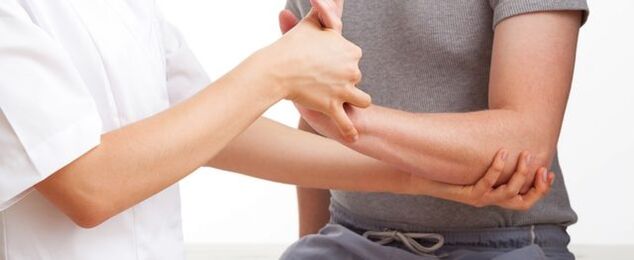
Facilities include:
- High probability of developing "contraction" or complete disappearance of active and passive movements in the limb;
- The stock is seen throughout the day, and not only in the morning, in arthritis;
- In some cases, the organ has to be manually faded to give a more convenient position.
Looks in the joint
Many people have heard a characteristic "crisp" sound when kneading the joints.There is an principle according to which this phenomenon is seen in a healthy person when pressure changes in the capsule of the bone joint in the capsules, as a result, the density of the mucus fluid changes dramatically and gas bubbles, which quickly expand and burst into it, produce a glimpse of crust.This phenomenon is not dangerous, but a similar sound appears as a result of other processes with arthrosis.
The cartilage of the Crysta was formed during the thorough destruction of the joint and joint lips, leading to the formation of cracks and renewal of ligamentus equipment.Even an inexperienced person will be able to separate the sound in the joint with arthrosis - he is more thicker and "drought".The severity and volume of the described symptoms is directly proportional to the phase of the disease.
There are nuances of sounds in the joint with arthrosis:
- Their presence in the staggering joint only;
- Always with a decline in mobility;
- The expansion of expansion is progressed in the later stages of the disease.

Change the presence of the joint
In the early stages of development of arthrosis, the process does not change as a joint of the bone.A noticeable change can only be seen with a neglected disease, when a part of the joint is completely erased, and the other still produces cartilage cells.As a result, the pathological area increases significantly and loses its natural form.The specified symptoms are extremely unfavorable, because the presence of deformation in the area, for example, the knee or hip joint will cause changes in the area of the lower structures due to the displacement of the applied load.
Types and stages of rheumatism
Due to the huge list of potential localization of pathological focus, the modern classification of arthrosis is quite branching.
In the issue of diagnosis and treatment of this disease, the main people are distinguished for convenience of communication between various medical centers and even countries:
- Arthrosis of the hands;
- Cervical;
- ankle;
- Knee;
- Polyrthrosis;
- Hip;
- Spinal cord.
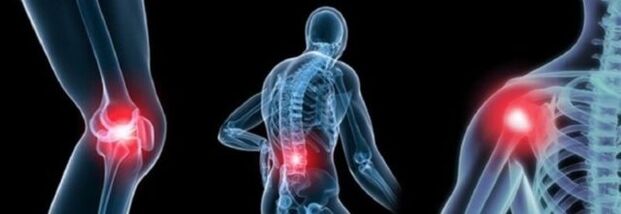
When establishing the diagnosis, a very important phase is the accurate determination of the phase of the disastrous process.The stages of development of arthrosis are distinguished:
Stage 1 - There are no visual changes in the size of the joint, disturbances are seen in the biochemical composition of the intra -trickler fluid, a trivial pain syndrome appears, complemented by inflammatory manifestations in the joint.
Stage 2 - A degenerative process is observed in cartilaginous fabric, significant pain syndromes during "Christ" forms, hardness and movements are included.Dystrophy of the joint around the muscles develops.
Stage 3 - The presence of a broad foci of cartilage destruction is determined, the size of the joint is changed, the dimensions of active and passive movements in the organs are significantly reduced, or completely absent.Often in patients at this stage, contractions develop which prevent fully movements in the affected area.
Complications
An uncontrolled process of destruction can lead to serious complications, which, in addition to reducing the quality of life, can lead to complete disability in independently taking care of themselves.
The most difficult includes:
- Complete destruction of cartilage tissue of the joint;
- Contraction;
- The presence of hernial protrusions in the area of the intervertebral disc;
- Severe disability of the patient;
- Important deformation of the organ.

Arthrosis treatment
Unfortunately, many patients, unfortunately, learn about what arthrosis is and how to treat it in those stages when a significant effect is not possible to achieve a significant effect.After the first symptoms and the presence of lifetime, it is necessary to engage in the improvement of the condition of the musculoskeletal system.This is due to the fact that the effect of factors contributing to the development of the disease is rarely possible.For example, age -related changes in blood supply from the joint and lymph flow require continuous use of vascular drugs.Given pathogenesis, therapy should be complex and wider.To begin, after the presence of unpleasant sensations while walking, see an expert of rheumatological profiles or trumetologists.The doctor will establish an accurate diagnosis, based on laboratory and instrumental diagnostics, and resolve the issue of determining adequate treatment.
Treatment with medicines
In the early stages of arthrosis, you can fix the condition with the help of drugs.For this purpose, such drugs are used:
- Hormones of adrenal cortex;
- Non -storoidal anti -inflammatory drugs;
- Preparation with chondroprottive effects.
A complex effect makes the patient possible to protect the patient from pain, level the inflammatory process and restore normal blood supply in the shortest time.

Latest therapy
Advanced growth in the field of drug treatment led the creation of new drugs, which is essentially the options of natural mucus fluid.Developed molecule cartilage can significantly reduce the process of decline, reduce pain and avoid inflammatory phenomena.Artificial mucus fluid is introduced directly into a joint bag every week.The duration of a course of treatment is 3-5 weeks.Typically, the result obtained is sufficient for a person's normal life for 6–12 months.Patients claim that the comfort and quality of life improves significantly.Unfortunately, this strategy applies only in relation to people with 1-2 stage arthrosis.
surgical treatment
With severe damage to large joints, such as the hip or knee, at a relatively young age for 60 years, patients are offered an operation for complete replacement of the joint.Today, ceramic and titanium implants are used that can restore completely lost tasks.These devices are quite strong and capable of providing the patient up to 20 years of life without any problem with dynamics in reputed joints.
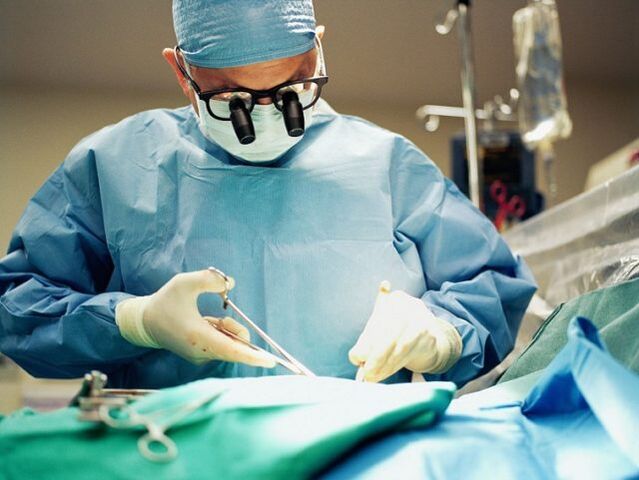
Folk dishes
Non -tradesal medicine is used widely in the treatment of arthrosis.This is due to the fact that after stopping an acute process, lifelong therapy is required, aimed at restoring and maintaining the natural structure of the cartilage.To achieve goals, the products used must be safe and most natural.
Compressed and lotions with the decoction of the following plants are very popular:
- ginger root;
- cinnamon;
- Kalanchoe;
- Turmeric;
- Ajmoda.
Diet with rheumatism
In the treatment of the pathology presented, it is extremely important to provide the body with continuous intake of nutrients.This can only be achieved when the dietary microlyment can be complied with in the context of protein, fat, carbohydrates, vitamins and protein, fat content.To compile the most sufficient power circuit, you should seek help from a nutritionist.It is necessary to remove carbohydrates and alcohol rapidly from the diet.The base of the table should be a dishes of fish, red meat and fresh fruit.
It is very important to follow the following nutritional rules for arthrosis:
- balance;
- Eating 5-6 times a day in small portions;
- Do not eat after 19:00;
- Get rid of the additional body weight.
Prevention
There is no specific prevention of arthrosis today due to polyteiological state.
You can warn the onset of the disease by looking at general recommendations:
- Proper nutrition;
- Medium physical activity 2-3 times a week;
- Generalization of body weight;
- Frequent partial nutrition;
- Compliance with personal hygiene rules;
- Deny of bad habits.
conclusion
The pathological condition presented of the musculoskeletal system is often seen in chronic patients.It is necessary to increase the frequency of early diagnosis of the disease, as it is possible to rely on a successful result from conservative treatment in this case only.The forecast for working ability is favorable, subject to the initial identification and adherence to the doctor's prescription.The presence of the third stage arthrosis is accompanied by a diagnosis of an adverse disease and may motivate the patient to serve themselves.
Nevertheless, even the most severe form of the disease is adjusted with the help of surgical treatment, the disadvantages of which are:
- Operation trauma;
- high cost;
- Long rehabilitation period;
- It cannot be applied to patients over 60 years of age.



















































